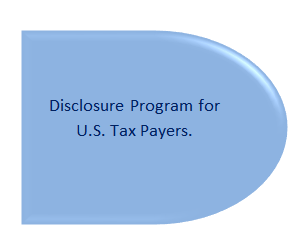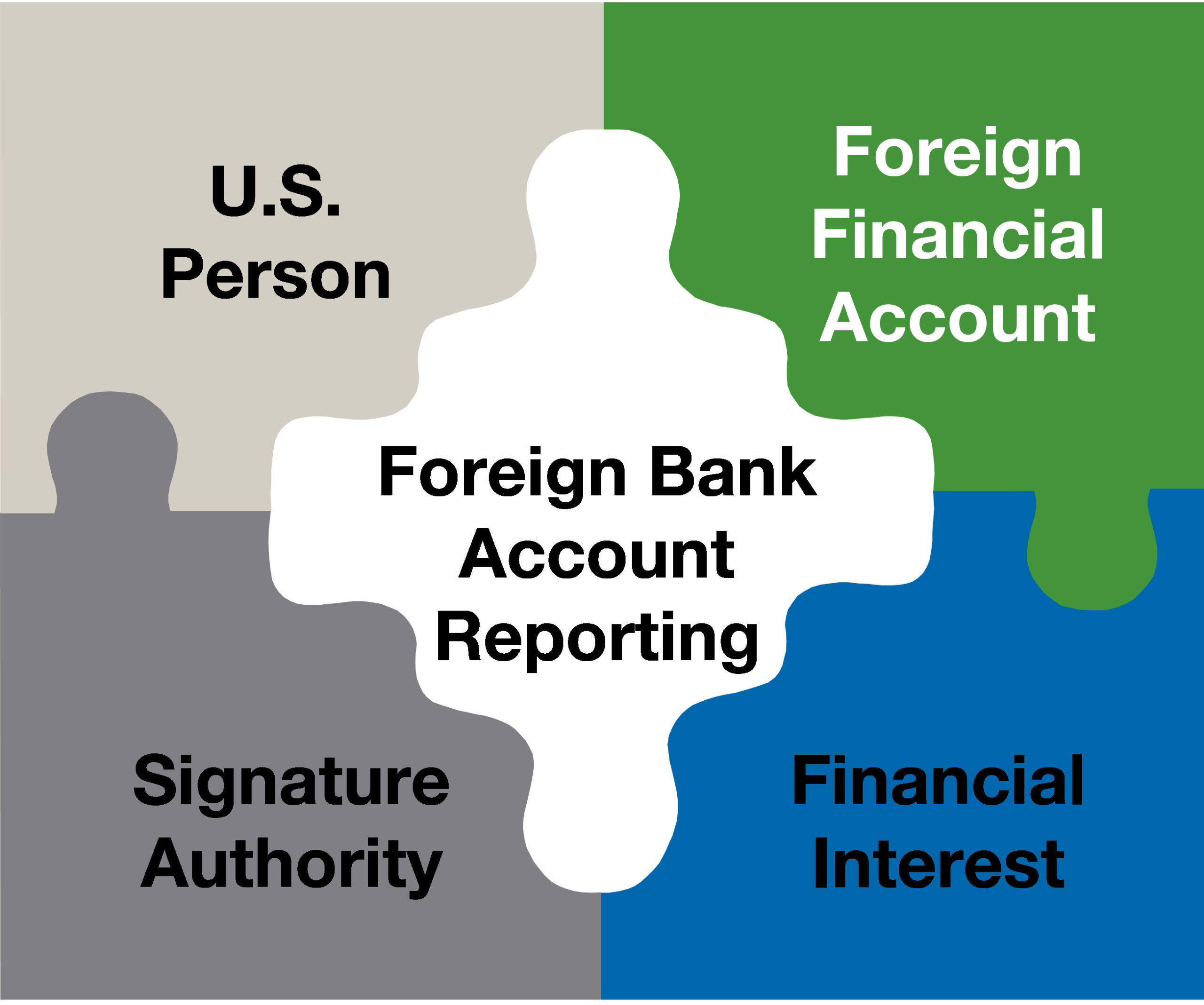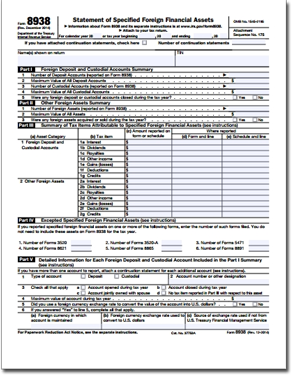Termination of OVDP and way forward
Following the termination of the Offshore Voluntary Disclosure Program (OVDP) on September 28, 2018, willfully delinquent taxpayers with exposure to criminal prosecution were left without an option for coming into tax and financial reporting compliance. Termination of the Program was due, in part, to the fall off in the number of delinquent taxpayers coming forward. The closure of the Program has caused some non-compliant filers to erroneously conclude that they are in the clear. Quite the contrary, the IRS is resolute in its commitment to ferret out and prosecute those who are engaged in offshore tax evasion and who continue to secrete funds overseas in order to avoid detection by the IRS. The IRS response to 2014 OVDP FAQ Number 4 makes this clear:
“Stopping offshore tax noncompliance and evasion remain top priorities of the IRS. The IRS enforces offshore compliance with tax and FBAR requirements using information received under the Foreign Account Tax Compliance Act (FATCA), the network of intergovernmental agreements between the U.S. and partner jurisdictions, automatic third-party account reporting, and other data-rich sources such as the Department of Justice’s Swiss Bank Program and various John Doe Summonses. The IRS leverages information resources using enhanced data analytics to continue to make it more difficult to evade tax by hiding offshore.”
Recognizing that the termination of the OVDP created a vacuum for individuals who are otherwise ineligible for either the Offshore or Domestic Streamlined Procedures, the IRS issued an Interim Guidance Memo on November 20, 2019 announcing the initiation of new Voluntary Disclosure Practice (VDP). However, the VDP is not a new iteration of the 2014 OVDP, but rather a modification of the existing VDP. Although the penalties under the VDP are significantly more severe than under the OVDP, the Practice still provides the taxpayer with an alternative to criminal prosecution. Making a voluntary disclosure does not guarantee non-prosecution, but can certainly enhance a taxpayer’s chances in most cases. Furthermore, in limited circumstances it may be possible to reduce the penalties.
The discussion that follows will shade light in understanding the new Voluntary Disclosure Practice that enhances a taxpayer’s chance of in the event of criminal prosecution. This discussion outlines the history of Offshore Voluntary Disclosures, filing requirements and penalty structure under the 2014 OVDP in comparison to the outline and essential elements of the VDP (Voluntary Disclosure Practice).
The History of Offshore Voluntary Disclosure Program (OVDP)
From 2003 to 2018, the IRS has initiated four offshore programs permitting taxpayers to come forward and disclose their offshore accounts and pay delinquent taxes, interest and penalties. The first of the four initiatives was offered in 2003 and was related to the offshore Credit Card Project (CCP) the IRS pursued starting in 2000. The IRS served “John Doe” summonses on major credit card companies seeking records on foreign bank accounts, but by the time the agency gathered enough data to place files in the hands of revenue agents, most cases had approached the end of the 3-year statute of limitations period for assessment. It was around the time of this project, in 2003, when the IRS announced its first “Offshore Voluntary Compliance Initiative” (OVCI) in order to get taxpayers to come forward and “clear up their tax liabilities.” The 2003 OVCI resulted in $75 million dollars in taxes paid by taxpayers who participated.
The next program took place in 2009 in conjunction with a crackdown on offshore tax evasion involving Swiss bank accounts, specifically those held at Union Bank of Switzerland (UBS). The U.S. government compelled UBS to name its U.S. clients and ended up charging the bank with “conspiring to defraud the United States by assisting account holders in evading the IRS.” Following this suit, the IRS announced its 2009 Voluntary Disclosure Program and collected $3.4 billion from 15,000 disclosures. The window of opportunity that taxpayers had to come forward was from March 23, 2009 to October 15, 2009.
After the close of the 2009 OVDP, taxpayers continued to seek compliance in regards to their offshore accounts and as a result, on February 8, 2011, the IRS announced its 2011 Offshore Voluntary Disclosure Initiative (OVDI). The agency reported that almost 12,000 disclosures were made under the 2011 OVDI.
In 2012, the IRS announced the fourth iteration of the disclosure program. Unlike the previous initiatives, the OVDP was to remain open indefinitely. Under the 2012 OVDP, individuals voluntarily disclosing offshore bank accounts were assessed a 27.5 percent miscellaneous offshore penalty on the highest aggregate account or asset balance for the prior 8 years, i.e. 2003-2010 (“disclosure period”). Taxpayers participating in the Program were also required to amend or file Federal Income Tax Returns for the prior eight years and pay any income tax due and owing, together with an accuracy penalty of 20% and interest. Participants in the OVDP would, however, not be subject to other tax penalties such as the civil fraud penalty, filing late penalty, late payment penalty and others.
The 2014 Offshore Voluntary Disclosure Program
On June 18, 2014 the IRS announced modifications to the 2012 Program including transitional treatment for taxpayers currently participating in OVDP who met the eligibility requirements for the expanded Streamlined Filing Compliance Procedures announced on June 18, 2014. The modification to the OVDP provided certain taxpayers with the opportunity to remain in the OVDP while taking advantage of the favorable penalty structure of the expanded Streamlined Procedures.
On March 13, 2018, the IRS announced that it would begin to wind down the OVDP and that the Program would close on September 28, 2018. In announcing the closure of the OVDP, the IRS lauded the success of the Program by stating that:
“Since the OVDP’s initial launch in 2009, more than 56,000 taxpayers have used one of the programs to comply voluntarily. All told, those taxpayers paid a total of $11.1 billion in back taxes, interest and penalties. The planned end of the current OVDP also reflects advances in third-party reporting and increased awareness of U.S. taxpayers of their offshore tax and reporting obligations.” March 13, 2018 IRS Announcement
In its announcement, the IRS also cautioned that they will continue with their domestic and global enforcement efforts:
“The IRS notes that it will continue to use tools besides voluntary disclosure to combat offshore tax avoidance, including taxpayer education, Whistle blower leads, civil examination and criminal prosecution.” Id.
History of the Voluntary Disclosure Practice (VDP)
The concept of making a voluntary disclosure has been in existence in one form or another for quite some time. Generally, the Practice has been used in domestic tax cases. The VDP permitted taxpayers with criminal exposure an opportunity to come into compliance and possibly avoid criminal prosecution. I.R.M § 9.5.11.9. Under the VDP,the IRS considers a voluntary disclosure “timely” if they received the disclosure prior to the initiation of an investigation or examination and prior to the receipt of information from either a third pay or another criminal enforcement agency concerning a taxpayer’s non-compliance. In addition to the requirement that the taxpayer’s disclosure be truthful and complete, the VDP is limited to legal source income.
With the termination of the OVDP and the November 20, 2018 announcement, the VDP is now applicable to both domestic and offshore disclosures. It should be noted that the VDP is effective for voluntary disclosures received after September 28, 2018. The Interim Memo provides that all voluntary disclosures received or postmarked by September 28, 2018 would be handled under the 2014 OVDP procedures. Finally, the Interim Memo provides that the IRS has discretion with respect to domestic voluntary disclosures received or postmarked on or before September 28, 2019 to apply the new VDP.
Under the new Practice, a taxpayer seeking to make a disclosure is required to make a pre-clearance request on Form 14457 and submit the request to Criminal Investigation (CI) of the IRS, who is tasked with screening all voluntary disclosure requests including offshore and domestic to determine if the taxpayer is eligible to make such a disclosure.
Once CI grants a taxpayer pre-clearance, the taxpayer must promptly submit all required voluntary disclosure documents using Form 14457. The revised Form 14457 will require the taxpayer to provide information related to non-compliance including a narrative that contains the facts and circumstances surrounding the noncompliance, as well as the disclosure of the taxpayer’s assets and any entities and/or related parties involved. The Form also requires the taxpayer to provide the name of any professional adviser, including but not limited to, accountants, lawyers, bankers and investment advisors that facilitated the taxpayer’s non-compliance in any manner.
Upon receipt of the taxpayer’s voluntary disclosure, CI has the option of granting or denying the taxpayer’s request for preliminary acceptance. If CI grants the taxpayer’s request, CI will notify the taxpayer in writing of preliminary acceptance and contemporaneously forward the preliminary acceptance letter and attachments to the Large Business and International (LBI) Unit of the IRS in Austin, Texas. The LBI Unit will determine the most recent year in the disclosure period, and thereafter forward the case to the appropriate “Operating Division and Exam for civil examination.” Id.
The new Practice includes a six year disclosure period and requires examination of the most recent six years of a taxpayer’s Federal Income Tax Returns. The VDP also permits the examiner to extend the scope of the examination to include other years of non-compliance. In certain instances, a taxpayer who cooperates, with the consent of the IRS, may be allowed to include additional tax years.
The taxpayer must submit all required returns as well as all FBAR reports for each year included in the disclosure period. Once all of the required returns and reports for the disclosure period are filed, the examiner will determine any additional tax, interest and penalties to be assessed. Depending upon the circumstances, the IRS will impose either the 75% civil fraud penalty under 26 I.R.C. § 6663 or the civil fraud penalty for the fraudulent failure to file tax returns under 26 U.S.C. § 6651(f) in the year of the disclosure period with the highest tax liability. In certain instances, the examiner may assert one of the two civil fraud penalties to more than one year. Where the taxpayer fails to cooperate in the resolution of the examination by agreement, the examiner may also extend the civil fraud penalty beyond the six years and request that CI revoke preliminary acceptance. I.R.M. § 9.5.11.9.4.
The willful FBAR penalty will be asserted consistent with 31 U.S.C. §5321(a)(5)(C) which provides for a maximum penalty of the greater of 50% of the balance in the account at the time of the violation or $100,000. The willful FBAR penalty may be assessed for multiple years. In addition, the examiner has the discretion to assess additional penalties for failure to file information returns.
Although the taxpayer can request that the lower accuracy penalty (20%) under 26 U.S.C. §6662 be applied in lieu of the civil fraud penalty or that the non-willful FBAR penalty be applied rather than the willful FBAR penalties, the granting of such requests is “expected to be exceptional.” The taxpayer must establish by clear and convincing evidence that the assessment of the civil fraud penalty or the willful FBAR penalty was not justified.
Under the VDP, the taxpayer retains the right to appeal with the IRS Office of Appeals. This Practice differs from the OVDP. Unless the taxpayer elected to opt out there was no right to appeal under the OVDP.
COMPARISON OF 2014 OVDP AND VDP
| 2014 OVDP | VDP | |
| Disclosure Period | 8 years | 6 Years but can be expanded |
| Accuracy Related penalty (assessed for each year of
additional tax liability) |
20% |
Subject to taxpayer request |
| and clear and convincing proof | ||
| 75% Civil Fraud Penalty or Civil Fraud Penalty for Fraudulent Failure to File Income Tax Returns | Not Applicable | 75% applied in year of highest tax liability or 15% per month or fraction thereof not to exceed 75% |
| Civil FBAR Penalties | 27.5% of the highest Aggregate balance in Any year during the disclosure procedure | The greater of 50% of the highest aggregate in the year of violation or $100,000
(Can be applied to multiple years). |
Conclusion
While the penalties under the new Practice rules for making a voluntary disclosure are severe in comparison the penalty structure under the OVDP, the new Practice does provide non-filers with an avenue to avoid criminal prosecution. The severity in penalties reflects the philosophy that those who have failed to come forward previously should not be rewarded for their delay. The new penalties also demonstrate that the longer you wait the more serious the consequences. Depending upon the circumstances, it may be possible to convince an IRS examiner that the penalties under the VDP are harsh and that lower penalties should be applied. In addition, individuals who do not have criminal exposure, should take advantage of either the Offshore or Domestic Streamlined Procedures where, depending upon the circumstances, the penalty will either is 0 or 5%. Failing to come forward is no longer an option. As each iteration of the OVDP and the VDP has demonstrated, the longer you wait, the more severe the penalties.








